Whether you snack on them fresh or bake them in a pie, cherries are some of the best summer fruits. If you live in zone 5, you may wonder what cherry trees you can grow that will survive the frosty winters. No worries! We've put together some of the best zone 5-hardy cherry varieties for your consideration.
Here are some of the best and most popular varieties of cherries whose trees grow well in zone 5:
- Bing
- Chelan
- Lambert
- Stella
- Rainier
- Montmorency
- English Morello
In this article, we'll take a closer look at each of these cherry trees. We'll learn more about their fruit, both sweet and sour, and their favored growing conditions. Read on to learn everything you need to know about these lovely trees and the flavorful fruit they produce!
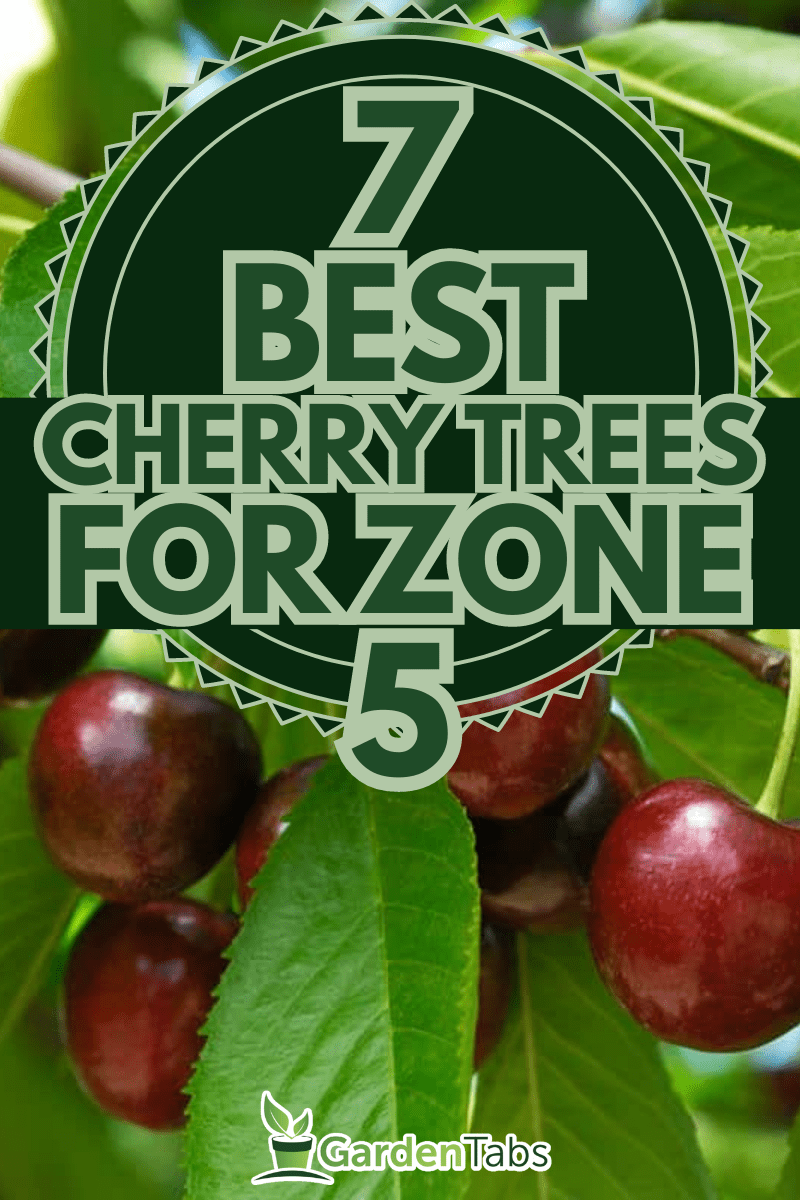
1. Bing

Bing cherries are the most widely sold variety in the United States. When you close your eyes and think of cherries, it's often a Bing cherry that you picture.
These sweet cherries are large and firm with a deep, dark color and characteristic heart shape. They are great for snacking on as is.
If you want to grow Bing cherry trees in zone 5, you're in luck! This cherry tree is cold hardy for zones 5 to 8. Your standard Bing grows to be a big tree, up to 35 feet tall. However, there are dwarf varieties available that max out at 12 to 15 feet in height.
Bing trees are not self-fertile. This means that you will need another Bing cherry tree or compatible cultivar nearby to grow fruit. If you decide to go with another cultivar, make sure you choose one with an overlapping blooming season. Bing trees bloom in early spring.
One thing to be wary of with Bing trees is that they are prone to fruit cracking. After a heavy rainfall, the tree will take in too much water for the fruit to handle, causing them to crack. If you live in an area that gets heavy rains in the summer, you may want to opt for a more cracking-resistant variety or take some precautions to protect your fruit.
2. Chelan
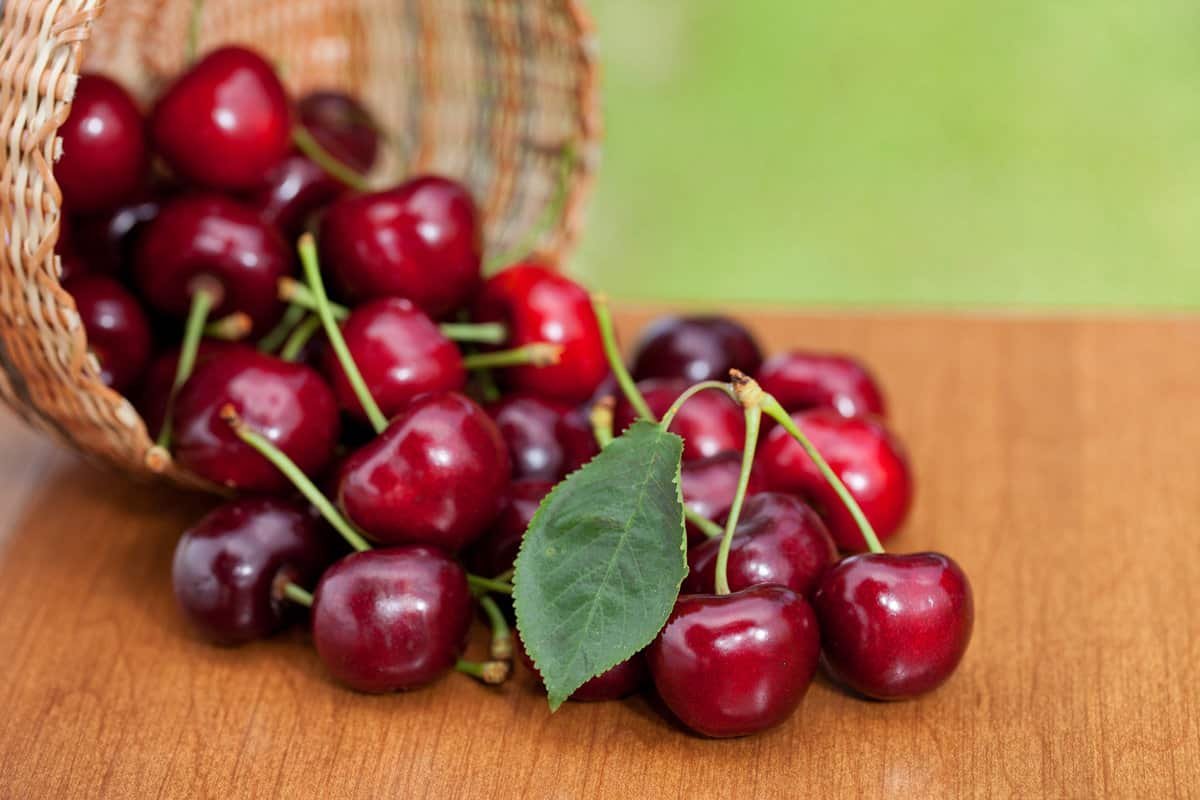
If you like Bing cherries, you're sure to love Chelan cherries too. While these cherries are usually a bit darker and not quite as sweet as Bing cherries, they have a similar size, texture, and flavor.
They also come with a couple of advantages over Bing cherries for the home grower. Remember how Bing cherries are prone to fruit cracking? Chelan cherries are more resistant to fruit cracking, making them a good choice in areas that get more rainfall.
Chelan cherries also ripen earlier than Bing cherries by as much as two weeks. This makes them a great choice for those who just can't wait for this tasty summer fruit.
Chelan cherries also require a pollinating partner, so be sure to grow two of them or another cherry tree with a similar blooming season such as Bing.
3. Lambert
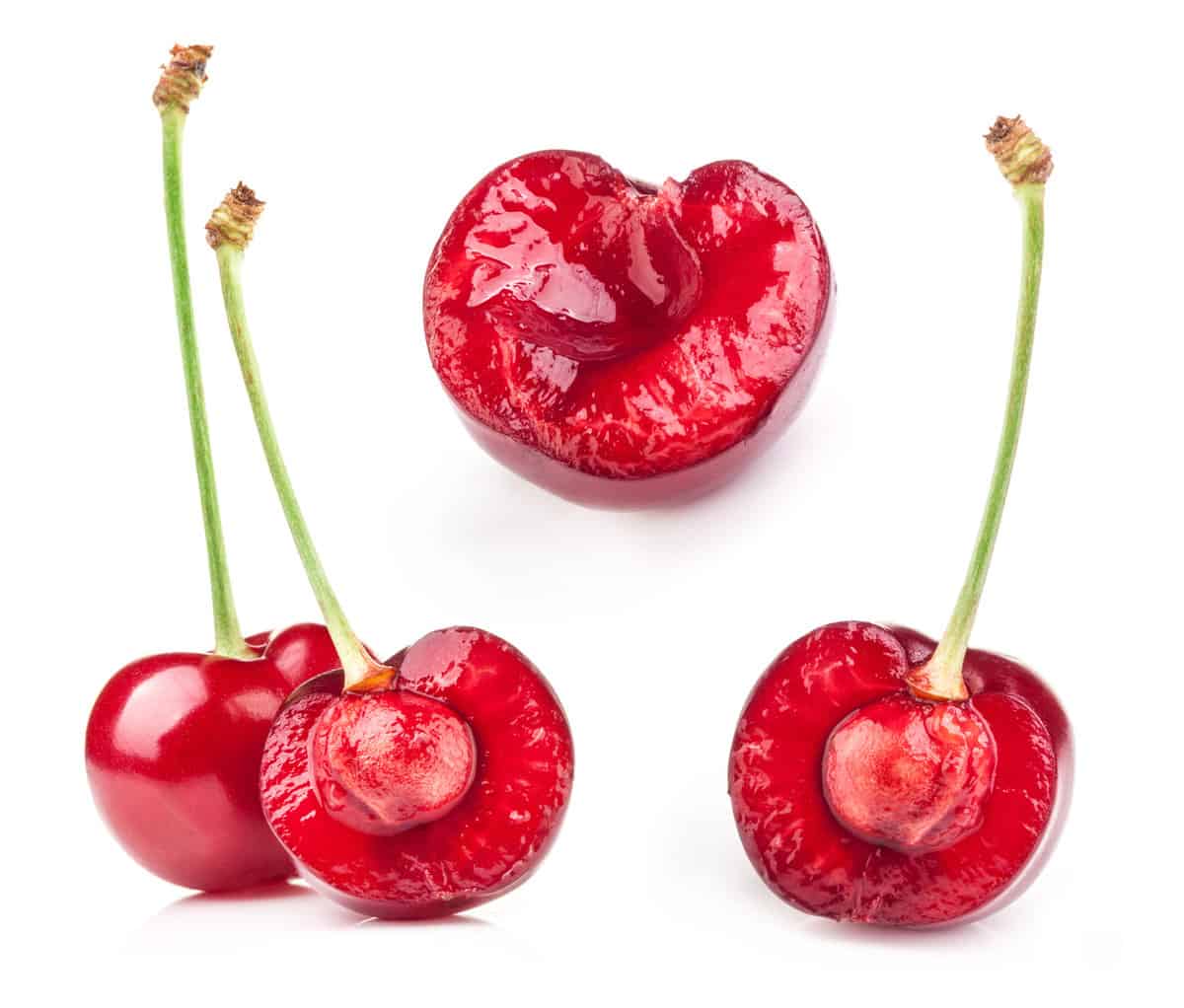
The next sweet cherry variety on our list is the Lambert. This tree has a reputation for being low maintenance and producing plenty of fruit, which makes it a popular choice with commercial growers. These characteristics also make the Lambert cherry a great choice for home growers as well!
In our research, we've found contradictory information as to whether the Lambert is self-pollinating or not. Many sources say that it is not, which one would expect since most older, sweet cherry varieties aren't. Even those sources that do claim the Lambert is self-fruiting recommend planting it with another cherry tree to increase yield.
For these reasons, we recommend growing your Lambert with another one or a variety with a similar blooming season if you want to collect its sweet fruit. Of course, if you only want an ornamental tree, you can grow the Lambert on its own.
4. Stella
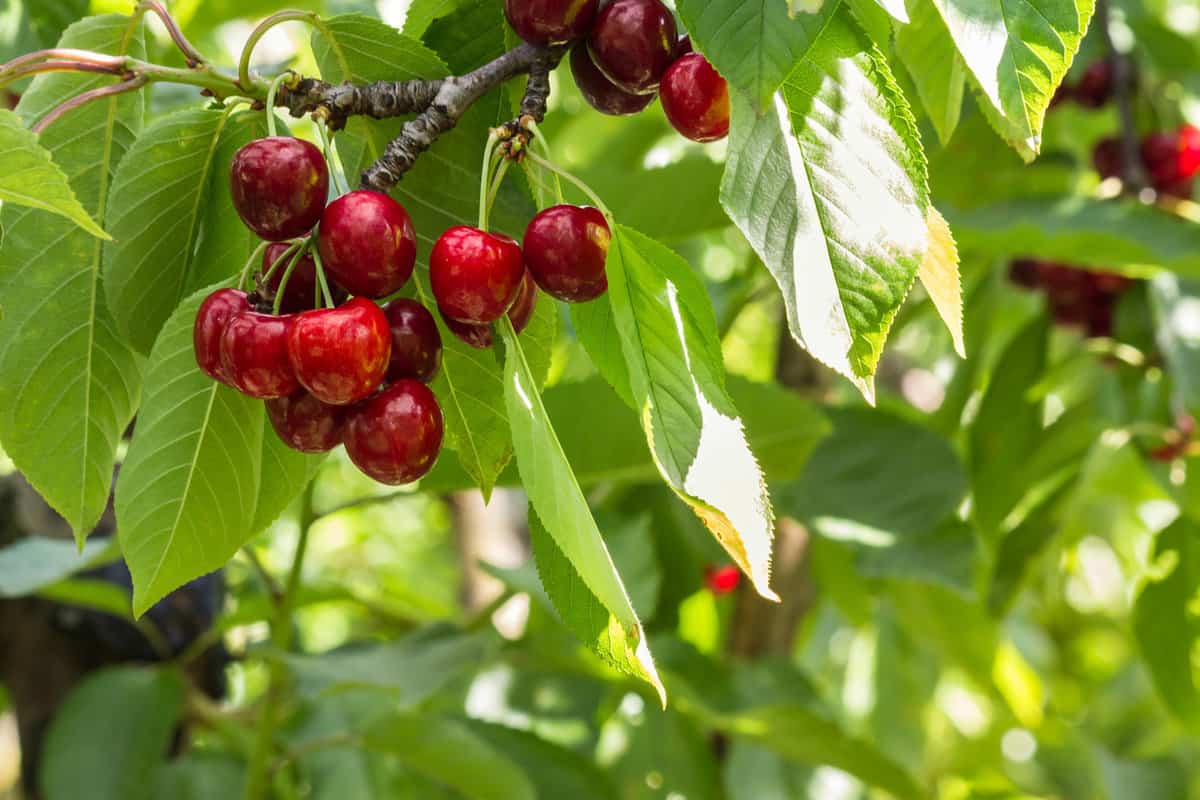
If you're looking for a reliably self-fruiting cherry tree, then Stella will treat you well. This tree is fully self-pollinating, so you'll have plenty of cherries even if you only grow a single tree. It can also pollinate any self-sterile cherry trees you have nearby if their blooming season overlaps.
Stella cherry trees are hardy in zones 5 to 8. They are on the smaller side for cherry trees, growing up to 20 feet tall with a spread up to 15 feet. This makes them a good choice for smaller spots.
5. Rainier
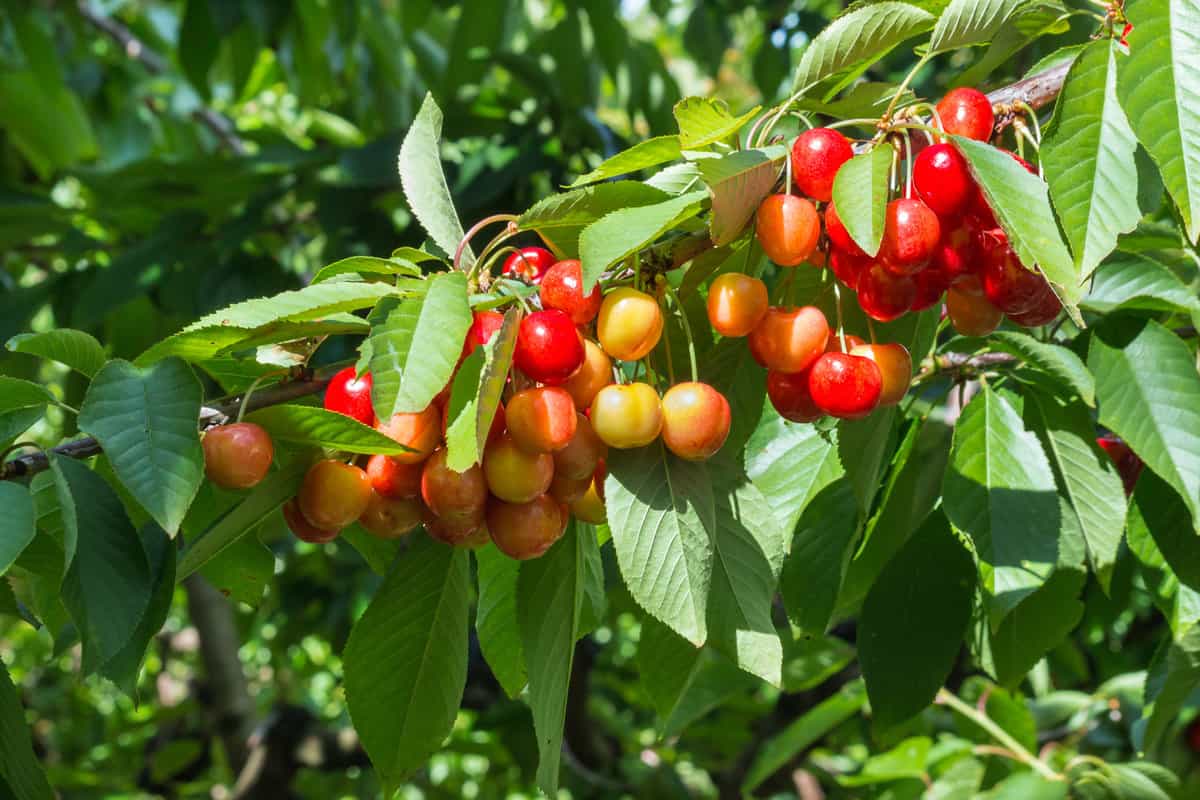
Rainier cherries are among the most prized sweet cherries. There are several factors that make these cherries so sought-after.
First is their unique color. It's pretty easy to find cherries that are dark or bright red, but Rainier cherries have a rare yellow color with just a blush of pink, even when fully ripe. This helps them stand out from the crowd.
Rainier cherry trees also don't produce as much as other varieties typically used by commercial growers. This rarity gives them a more heritage feel (as well as inflating the price tag).
Most importantly, though, Rainier cherries are delicious. They have a pleasant sweetness and delicate flavor that makes them a perfect snacking cherry.
Rainier trees are not self-fertile, so make sure you have another tree nearby if you want yours to bear fruit. Rainier cherries also ripen earlier than many other cultivars, so you'll be able to enjoy them in early summer or even in late spring.
6. Montmorency
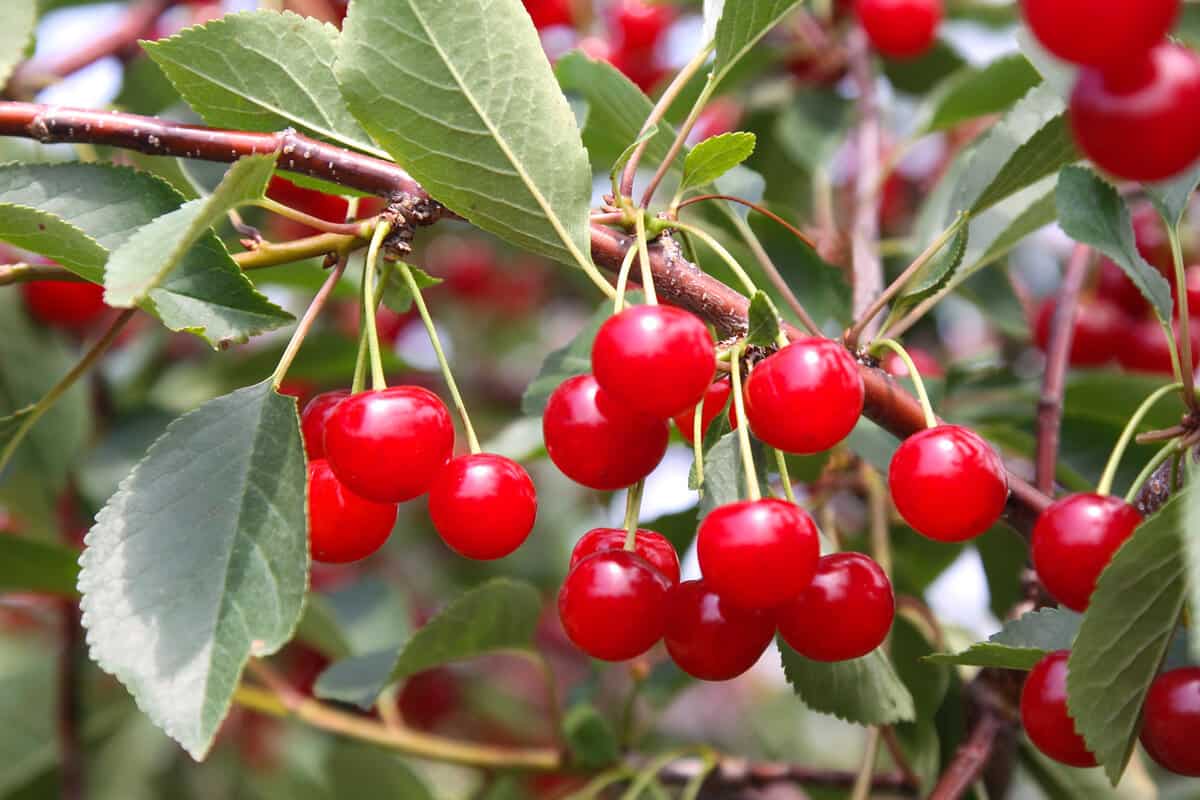
So far, we've looked at some great sweet cherry varieties you can enjoy right off the stem. These sweet cherries deserve all the love they can get, but sour cherries need some love too. That brings us to the most popular sour cherry in North America: Montmorency.
Montmorency cherries are well known as "tart cherries," and the name couldn't be more appropriate. These cherries are literally more tart than the sweet varieties we've discussed, meaning they can be quite sour when eaten fresh. On top of that, you can also call them tart cherries because they are great cooked in deserts like pies and, you guessed it, tarts!
Tart cherries aren't just great for pastries, though. They can also be enjoyed fresh if you like sour sweets, and their flavor holds up more than their sweet companions when made into jams, dried fruit, or juices as well as when candied!
If that wasn't enough, sour cherries may even have health benefits. Research has shown that drinking tart cherry juice can help relieve soreness after workouts, relieve gout, and even help with insomnia. Some of these studies even used Montmorency juice specifically.
Montmorency cherries also have the advantage of growing on a self-fertile tree. While growing more than one will help increase the productivity of your tree, you'll still get plenty of cherries from just a single tree.
7. English Morello
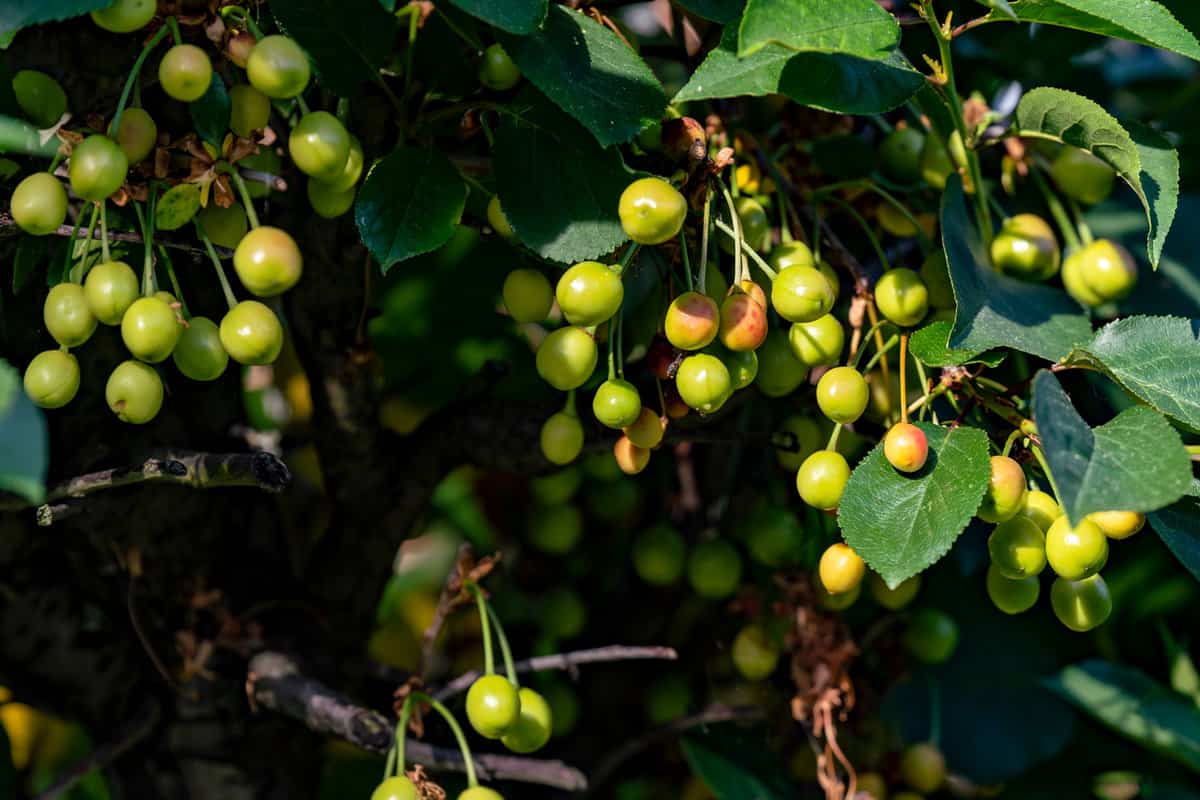
The next sour cherry on our list is the English Morello, but don't worry; it grows well in the United States too. In fact, most sour cherry varieties are more cold-hardy than their sweet counterparts, including this one which grows well in zones 4 to 9.
Like Montmorency, English Morello trees are also self-fruiting. This means a single tree will be able to produce fruit, whether or not you have any pollinating partners nearby.
They do differ from Montmorency cherries in several ways, one of which is the color of their flesh. Montmorency cherries are an amarelle variety, which has red skin but light-colored flesh. Morellos, on the other hand, have pigment through their flesh. English Morellos have dark-colored skin and red flesh to boot. This ups the color punch when they are used in jams and baked goods!
Growing Cherry Trees in Zone 5
We've seen some of the best varieties of cherries for zone 5, but, really, most varieties can be grown in this zone. In general, sweet cherries don't deal with cold as well as sour cherries. Most sweet cherries are cold hardy for zone 5 to 7, while zones 4 to 6 are best for sour cherries. You'll notice that zone 5 works well for both!
However, there are some general cherry tree growing tips you should follow:
- Plant cherry trees early in spring or late in fall
- Your cherries will grow best with plenty of sun, at least 6 hours a day
- Plant cherry trees with plenty of space between them and air circulation
- Cherries like soil that drains well and has a pH between 6.0 and 7.0
- Remember that most cherry trees don't produce fruit until their fourth year at the earliest, although some dwarf varieties fruit earlier
- If you buy a sapling from a nursery, be sure to check how old it is and when the specific variety usually starts producing fruit
- Make sure you plant multiple trees if your variety is not self-pollinating and you want to harvest fruit
- Most sour cherries are self-pollinating and most sweet cherries are self-sterile, although there are some exceptions
- Cherry trees don't have to be the same variety to pollinate each other, but only if they have an overlapping bloom time
- Only harvest cherries when they are fully ripe
- Cherries develop a lot of sugar in the last few days of ripening. They will continue to ripen after picking, but only moderately
Conclusion
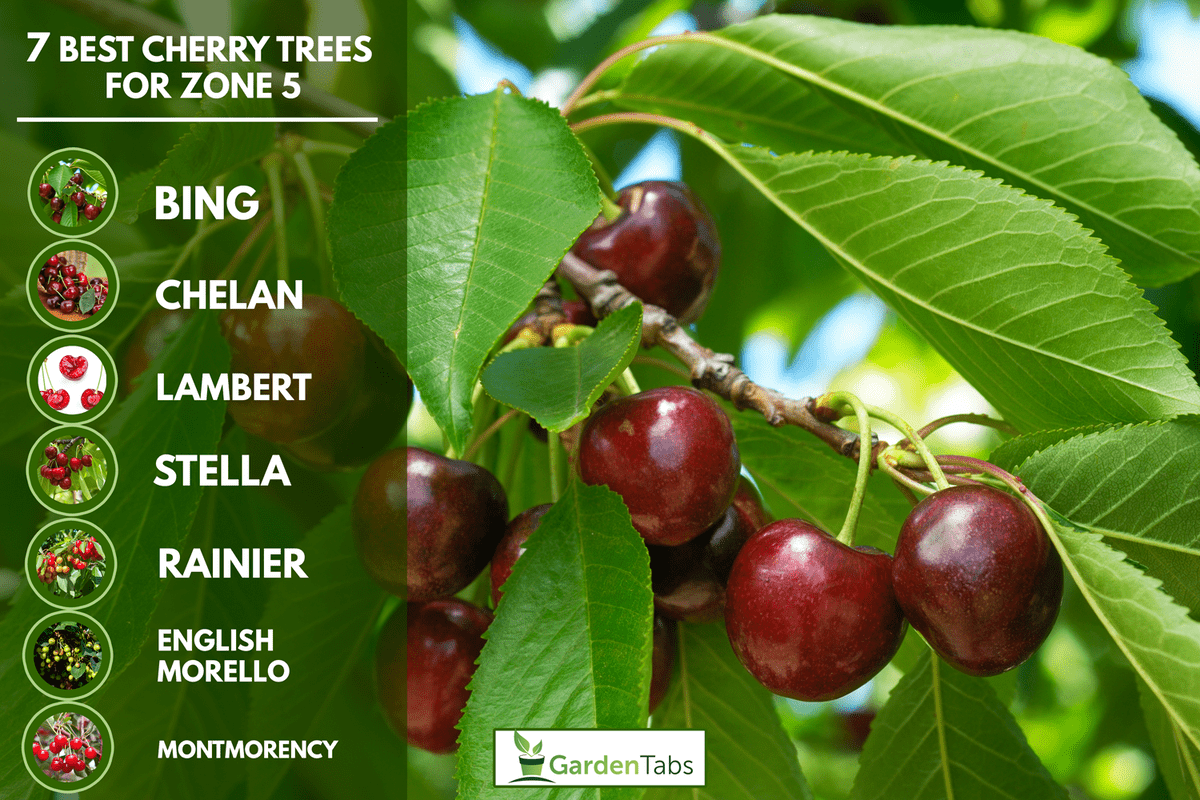
Now you know more about the best cherry trees for your zone 5 garden. You'll be ready to choose the variety that suits your garden and style!
If you enjoyed this article, be sure to check out these informative pieces:
How Fast Do Cherry Trees Grow?
